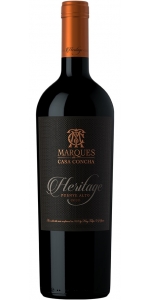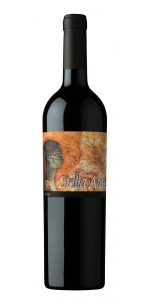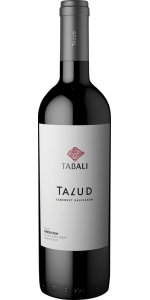Wine from Maipo Valley

Maipo Valley is a region in Chile located directly south of Santiago. The Maipo Valley is situated between the Coastal Range and the Andes Mountains. The Maipo Valley is mostly rocky soils with excellent natural drainage, making it excellent for viticulture. The Maipo Valley is referred to with 3 separate growing areas, Alto Maipo, Central Maipo, and Maipo Bajo. Alto Maipo having the rocky soils and good drainage, Central Maipo with a slightly warmer climate and more clay in the soil which gives a slightly less refined wine style, and Maipo Bajo which has the least amount of vineyards and focusing more on wineries. Cabernet Sauvignon and Carmenere are the most popular grape types grown in the Maipo Valley, but you can also find Syrah, Merlot, Sauvignon Blanc, and Chardonnay. Maipo Valley is often referred to as the “Bordeaux of South America” due to the excellent quality, fruit filled Cabernet that is produced there.
Marques de Casa Concha Heritage is made from 84% Cabernet Sauvignon, 12% Cabernet Franc, & 4% Petit Verdot.
Deep, dark red in color with lush flavors of cherries, blackcurrants, blackberries, cedar, and a bit of black tar. It shows a tremendous concentration of flavors and a smooth, almost silky texture framed by a firm tannic structure that truly stands out at the beginning of the long finish.
This wine pairs beautifully with grilled, roasted, or braised red meats and game in sauces that have a bit of acidity, with tomato or wine or with herbs such as rosemary, thyme, and bay leaf. A perfect wine for most cheeses.
100% estate grown red blend from renowned Puente Alto terroir. Chile’s most acclaimed DO. Upon arriving at the winery, the grapes are destemmed and crushed for fermentation, which takes place in closed stainless steel tanks with daily pump overs throughout the entire 10-day process. The new wine remains in contact with its skins for approximately 10 days, when it is devatted and malolactic fermentation is allowed to take place naturally.
The wine then underwent 16 months in French oak barrels, 40% first use, 60% second use.
El Mariscal vineyard is 600 meters above sea level and is made up of 52.95 hectares, of which 46.23 correspond to Cabernet Sauvignon, 4.52 to Cabernet Franc and 2.20 to Petit Verdot; and it has a density of 5,500 plants/ha, vines that come from mass selection and are mostly on loam. Meanwhile, Don Melchor vineyard is 650 meters above sea level and is made up of 125.96 hectares, of which 112.67 correspond to Cabernet Sauvignon, 1.28 to Cabernet Franc, 2.45% to Merlot, 1.28 to Petit Verdot and 8.28 to ground in rotation. It has a density of 2,000 to 4,000 plants/ha, and the new one (20%), planted between 2004 and 2017 and with a density of 8,000 plants/ha. The vines come from pre-phylloxera mass selection and are on loam. The vineyards are located in the Puente Alto denomination of origin, on the northern bank of the Maipo River, specifically on the river’s third alluvial terrace, which is one of the oldest and that instills great character and elegance to the wines that come from there. The soils are of alluvial origin, rocky, poor in nutrients, and highly permeable due to the amount of gravel in the subsoil, which enables excellent drainage. The climate is semi-arid Mediterranean with a strong influence of the Andes Mountains. This is the coldest part of the Maipo Valley. Its pronounced daily temperature oscillation of approximately 18ºC extends the grape ripening process, concentrating and intensifying its aromas.
Review:
Black pepper and cherry give way to hints of chocolate after some aeration in the glass. The same notes show on the palate and blend with bell pepper. This red comes from the alluvial soils in the D.O. Puente Alto and is full bodied, with a firm structure. Moderate acidity is enough to freshen up the finish.
-Wine Enthusiast 92 Points
All older vintage wines have been purchased from a single collectors cellar. Pictures can be requested before shipment.
Stella Aurea is a Chilean red made from 90% Cabernet Sauvignon, 7% Cabernet Franc and 3% Petit Verdot.
Expressive and complex, berries and minty, balsamic tones.
Wide and dense palate with fine tannins and silky texture.
Balance between power and elegance.
Hand harvested- Wine is aged at least 6 months in bottle, with further aging potential of 15 years.
A slope (un talud) leading up to a mountain where centuries of rock falls have left the soil beneath full of large angular rocks, and therefore useless for most agriculture. Deposited hugger-mugger amongst the clay and sand however, they offer perfect drainage and allow vines to grow, forcing their roots ever downwards in search of water, picking up minerals along the way. If you wanted to explain to someone what Cabernet Sauvignon tasted like, you could do a lot worse than showing them this beautiful expression of the variety which demonstrates great purity, concentration and elegance.
Review:
Talud is from the oldest cabernet sauvignon vineyards on Tabalí’s estate in the coastal Maipo zone, 50 kilometers from the Pacific, planted in 1999. The soils are colluvial, which often deliver firm, pointed tannins, and those are present here, but they’re very nicely accompanied by juicy red fruit and bright acidity that allows this wine to put its fresh, vibrant facet in the foreground. Take note, however, there are deep, dense flavors here. It’s still a very young cabernet, so make room in the cellar.
-Patricio Tapia - Descorchados 95 Points
- back
Selected Options
Regions
Categories
Pricing
Countries
Regions
Grape Types
Wineries
Organic/Free Shipping
J Lohr Signature Paso Robles Cabernet Sauvignon is made from 80% Cabernet Sauvignon 6% Cabernet Franc 6% Saint Macaire 4% Petit Verdot 4% Malbec.
J. Lohr Signature Cabernet Sauvignon was first produced to honor the 80th birthday of founder Jerry Lohr. This limited release was specially selected and blended from the exceptional 2016 vintage in Paso Robles. It is both a tribute to Jerry's pioneering efforts in the region and our red wine portfolio's ultimate expression of Cabernet Sauvignon. VINEYARDS & CELLAR Beck Vineyard, in the Creston District of Paso Robles, is a unique, high elevation site that sits at 1,700 feet above the early morning fog line. Its calcareous soils and cooling afternoon winds are perfect for growing Cabernet Sauvignon. The Cabernet from this vineyard ripens early with excellent color, purity of fruit, and phenolic maturity. Incorporation of Cabernet Franc brings freshness to the blend, while the rare Bordeaux variety, Saint Macaire, brings density and a savory character. Petit Verdot and Malbec add structure, color, and a component of bright fruit. The hand-harvested grapes were held separate at harvest and berry-sorted into six-ton open top tanks for fermentation. Maceration took place on the skins for five days, before early pressing to achieve ideal tannin extraction. Aged 19 months in 100% new French oak from coopers Nadalie and Sylvain.
Review:
The nose on this luxury-level bottling is pure and refreshing, offering aromas of black cherry, loamy soil, dried mint and caramel-laced coffee. The palate is framed by upright tannins, yet is soft enough to enjoy now, showing deep flavors of black currant, dried herb, milk chocolate and toffee. Drink 2020–2040.
-Wine Enthusiast 95 Points
Montes Alpha M 2019 is made from 80% Cabernet Sauvignon, 10% Cabernet Franc, 5% Merlot, 5% Petit Verdot.
Montes Alpha M is the result of an extremely limited production and a rigorous selection of the grapes, one by one, led by Aurelio Montes. Coming from the Colchagua Valley, it is one of the best and most awarded wines of Chile. The vineyards that give rise to Montes Alpha M are located in the Apalta zone of the Colchagua Valley. The soils are of granitic origin and are shallow in the upper, mountainous sectors. They vary in the clay content, depth, amount of organic matter, and especially the types of rocks and stones they are made up of. The soils origin can also range from fluvial to glacial, which shows the great diversity of soils in our vineyards. Some zones are influenced by the Tinguiririca River and others by mudslides and the detachment of material from high above in the mountain chain that delimits the valley.
- Extremely limited production where grapes are hand selected one by one.
- Only released if head winemaker, Aurelio Montes approves the quality.
- Originating from Colchagua Valley, one of the best and most awarded Chilean wines.
- Aged in new French oak barrels for 18 months.
- Smooth but structured on the palate, with silky tannins.
Review:
Deep nose, but really fresh at the same time. Currants, blackberries and chili-pepper chocolate with cedary and meaty undertones. This is really juicy, with a tight, tensely framed palate, underscored by lots of creamy, dusty tannins. A lengthy, refined and elegant expression of cabernet sauvignon, but a strong statement from Colchagua. Drink or hold.
-James Suckling 97 Points








